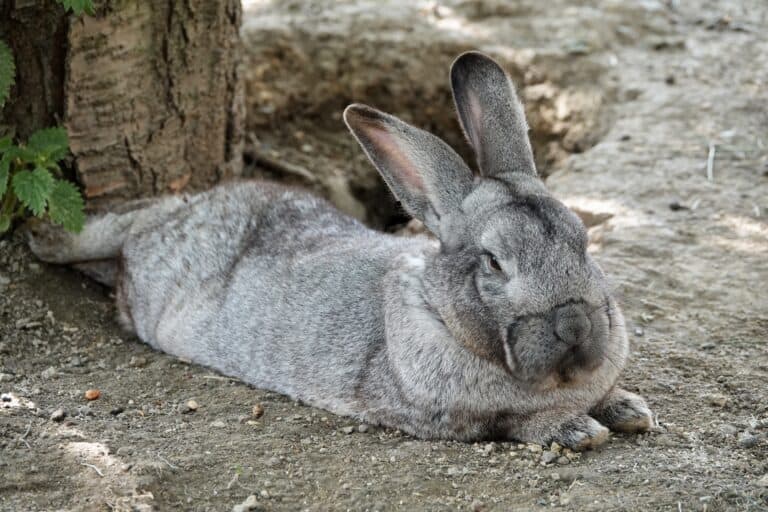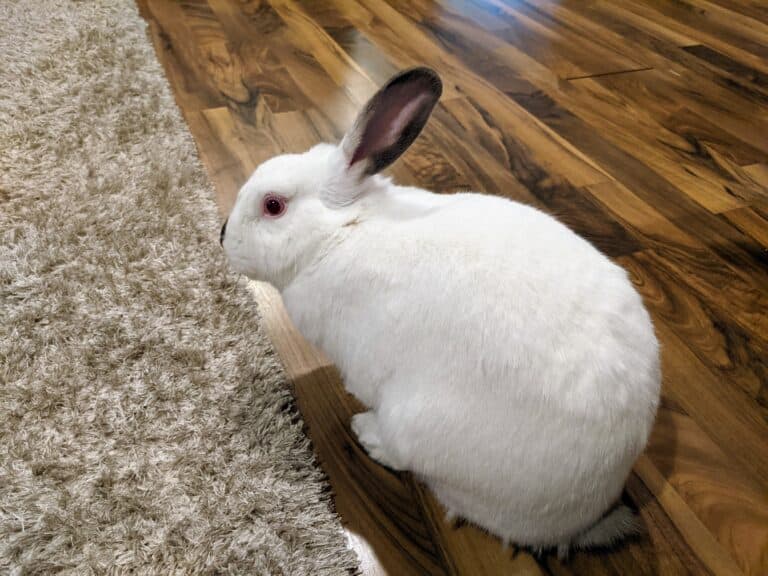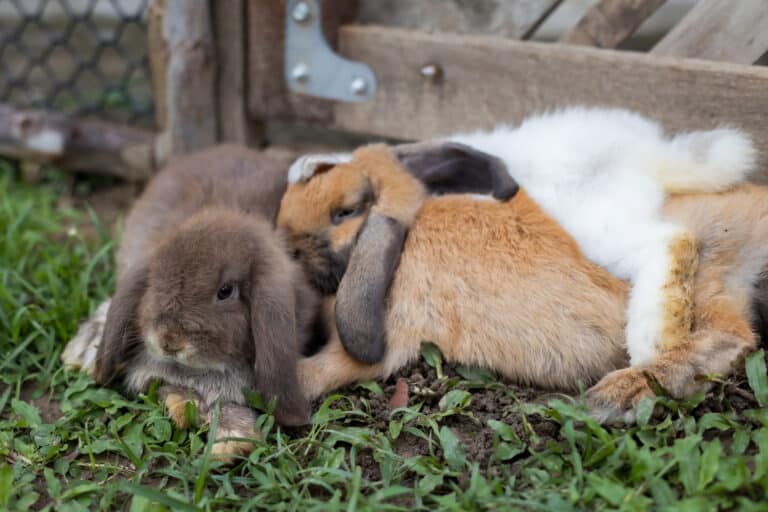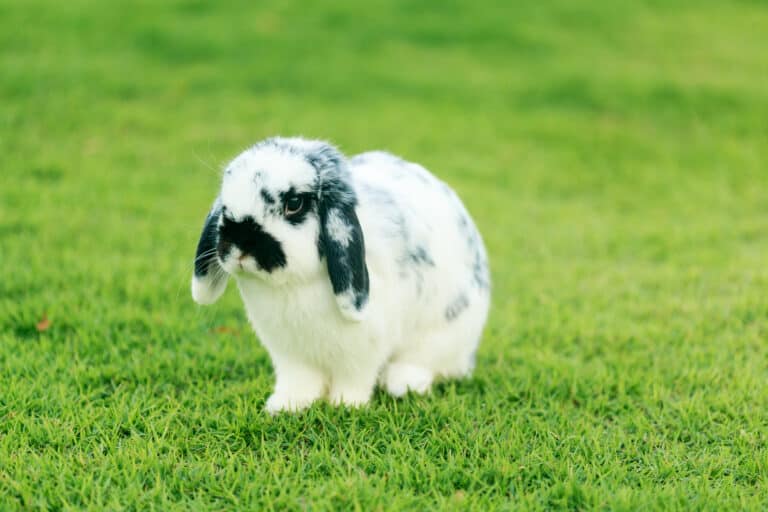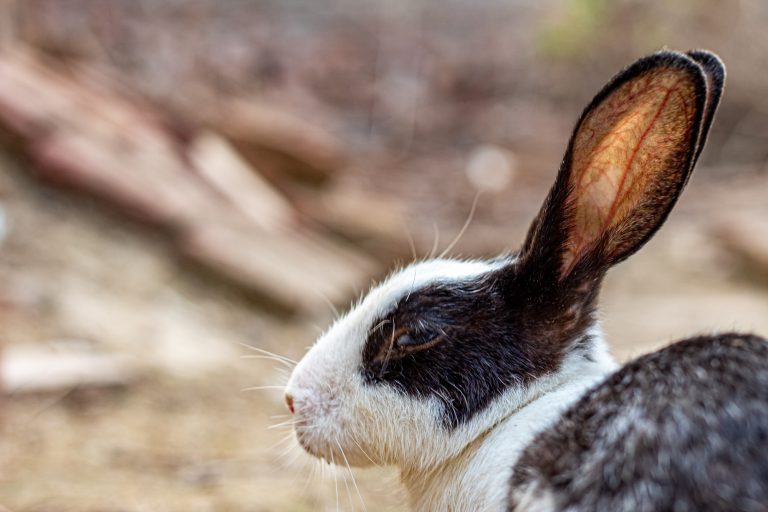Blue Mini Rex Rabbit: History, Facts, Care & More

It’s all about the fur. That’s what most rabbit lovers often say when they talk about the Mini Rex rabbit, and we can understand why. The coat is definitely the most distinctive trait of this bun breed. It’s so plush and velvety that touching it is an experience to remember. What’s more, this rabbit type comes in an itty-bitty package and a range of fascinating colors, from brown, black, and even lilac and blue.
Are you wondering what it’s like to have a blue Mini Rex for a pet? Let’s look into what brings the cuteness quotient of this bun type to stratospheric levels.
Background
The Mini Rex breed came into being courtesy of Monna Berryhill, who developed the first Mini Rex rabbit in 1984. She started the process by mixing a black Dwarf Rex with an undersized Lynx Red. The pair produced the first Mini Rex bun, a castor-colored furball.
Berryhill presented her creation to the American Rabbit Breeder’s Association (ARBA) in 1986, who accepted it as a breed. Other breeders started developing different varieties that come in various colors, like this black otter. The Blue Mini Rex is a product of all their experimentation.

Appearance
As we mentioned, their fur makes the Mini Rex stand out. It’s dense and soft, which is typical of the Rex breed. Moreover, it lacks long guard hairs, which lets you feel the incredibly soft underfur when you touch it.
Mini Rexes have compact and rounded bodies, well-developed hind legs, shoulders, and midsection. Their legs are straight and short, though not as short as other dwarf types.
Of course, what makes the Blue Mini Rex stand out from its kind is the color of its coat. It’s not actually blue but more of a rich blue grey.
Personality
This bun breed not only tops the looks department but also makes an ideal pet. Blue Mini Rexes are sweet, docile, and friendly. They enjoy being with their humans, so be prepared to enjoy displays of affection after you’ve bonded with your charming little pet.
Still, even though the Mini Rex has a gentle nature, you shouldn’t leave your fur baby alone with small kids. These buns dislike mishandling and can become aggressive if they’re suddenly grabbed or lifted off their feet. Fortunately, they don’t usually bite but could scratch if they feel threatened.
Size
The Mini Rex is considered a dwarf breed. It grows to a length of 10 to 12 inches and would usually weigh less than 5 pounds in adulthood. The does (females) are typically larger than the bucks (males).
Health
A blue Mini Rex is prone to the usual health issues other bun breeds face. These include the following ailments:
- Respiratory diseases
- Digestive problems, such as Gastrointestinal (GI) stasis
- Malocclusion
- Parasitic infestations
- Eye problems, such as corneal ulcers
- Uterine cancer (in unspayed females) and testicular cancer (in unspayed males)
- Sore hocks (the Mini Rex is more prone to this issue than other rabbit types because their extremely soft fur offers less protection to their feet)
As prey animals, rabbits of all breeds tend to hide signs of illness, so watch out for physical and behavioral changes to ensure that your furball stays in the best of health.

Care
Excellent care, good food, and a safe environment will help ensure that your blue Mini Rex will live a long, happy, and healthy life. Here are some of the breed’s requirements.
Housing
An indoor enclosure is best for your pet’s home. A wire cage works well for this purpose. However, you’ll need to get one with the right wire-size gauge. Small though the Mini Rex may be, this bun can still chew through thin wires and escape from the enclosure.
The minimum cage size should be 30 inches by 30 inches or 4 to 5 times your rabbit’s size. As a general rule, the space should be large enough for your bun to sit upright and have around 5 feet to move freely.
Keep your Mini Rex’s cage clean to prevent the spread of diseases. Empty and wash the litter box, food, and water bowls daily and the whole cage, along with other accessories, weekly.
Food
The blue Mini Rex thrives on a diet composed primarily of hay. Like buns from other breeds, these cuties need plenty of hay to keep their digestion healthy. Gnawing on the fibrous plant material also wears down their teeth, which would otherwise grow too long and potentially cause dental issues.
Fresh, leafy veggies and some fruits will help supply your pet’s additional nutrients. However, serve fruits and vegetables sparingly so they won’t cause health problems.
Grooming
Rabbits groom themselves regularly. Still, you’ll need to give your little cutie a hand to keep his coat healthy and shiny. Brush your Mini Rex once or twice a week, increasing the frequency during molting season. Brushing helps prevents tangles. It also removes the loose fur, which your pet may ingest when he grooms himself. Use rabbit-safe equipment and brush gently to avoid damaging the coat and skin.
Don’t forget to trim your Mini Rex’s nails. If you’re uncomfortable doing this task, you can always take your pet to the groomer for the needed nail trim.
Physical and Mental Exercise
Your Mini Rex may be small, but it still needs a moderate amount of exercise and some enrichment activities. If you keep your bun in an enclosure, let him out for at least 4 hours a day to explore and run freely. Of course, first, make sure that you have bunny-proofed your home as buns love to chew. Chewing on wires can lead to electrocution while chewing the carpet can cause digestive trouble if the pieces don’t pass smoothly out of your bun’s digestive system.
Provide your pet with some toys, like these chew toys, to stimulate his mind and keep him from getting bored.

How Much Does a Blue Mini Rex Cost?
Buns from the Mini Rex breed can fetch quite a sum owing to their adaptability for different purposes. They can serve as pets, therapy rabbits, and show animals, so it’s no surprise they can command a considerable price.
If you plan to get one of these adorable animal companions, be prepared to shell out around $10 to $50. However, Mini Rexes with unique colors or markings will cost many times over the mentioned amount, with the prices even going through the roof.
What About the Costs of Keeping a Rabbit as a Pet?
Keeping a Mini Rex can be a bit heavy on the pocket. You’ll spend mainly on your fur baby’s food, litter, or bedding. You’ll also need to replace his worn-out toys, especially chew toys and other accessories. Remember to include the cost of routine check-ups, shots, and emergency vet care in your budget.
Expect to spend around $40 to $60 per month for food and bedding/litter and something like $10 to $20 per month for replacing toys and accessories. Vet fees can range from $55- $155 per consultation.
However, most bun lovers will attest to the fact that the affection you’ll get from your Mini Rex makes the expense of keeping one well worth it.
Where to Get a Blue Mini Rex
The Mini Rex is not a rare breed. As such, you can get one from most pet stores. Still, it’s best to go to reputable breeders or rescue pet organizations that can provide more accurate information about your bun’s health, history, temperament, and the like.
A blue Mini Rex makes an ideal pet. This bun breed may be wary of strangers at first but will enjoy being held by those he knows. So if you bring one home, be sure to give your furball plenty of love and the best of care.
More on Rabbit Breeds!
We hope you enjoyed this post! If you did, will you give it a share or two 🙂 Thank you! ~from Every Bunny Welcome



